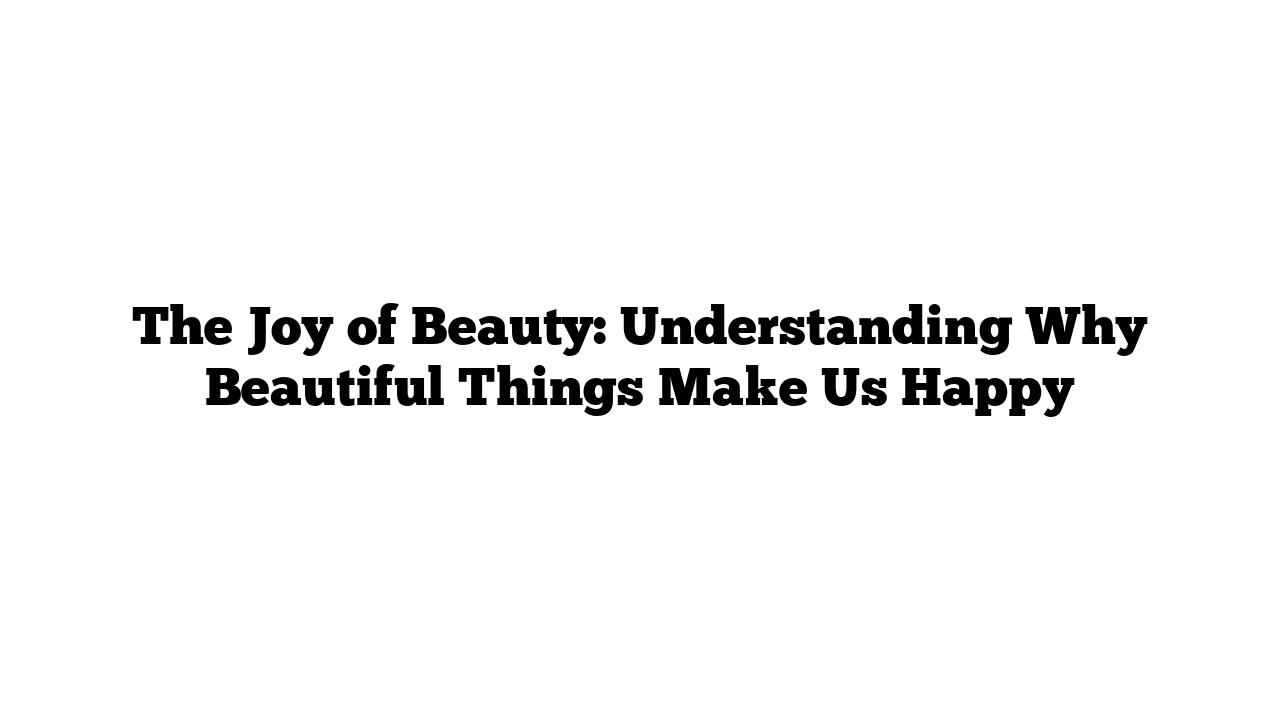Beauty surrounds us in countless forms—landscapes, faces, fine art, and epic architecture. It’s even present in simple things, like the reflection of sunlight on an empty bottle. But what exactly is beauty? It exists in our minds as a pleasant feeling. When we find something beautiful, it often relates to its color, shape, or proportion.
The Human Experience of Beauty
Beauty is a unique human experience that has persisted for millions of years. Early humans crafted their tools with symmetrical shapes because they preferred them that way, even when practicality wasn’t a clear factor. Researchers have yet to pinpoint why our ancestors spent time on aesthetics. However, it appears that beauty was valued in ancient times, similar to how we appreciate it today.
Over history, our understanding of beauty has changed significantly. Ideals have shifted, but some principles, like the golden ratio and symmetry, have remained constant. These elements of beauty appear in the art and architecture of many cultures, from ancient times to modern society.
Nature’s Patterns and Our Perception of Beauty
Much of what we consider beautiful is rooted in nature. Fractal patterns can be found in snail shells, flower heads, waves, and clouds. Recognizing these patterns was crucial for our ancestors. For instance, they needed to determine whether clouds signaled rain or if certain waters were safe for swimming.
Symmetry plays a vital role in our understanding of beauty. In nature, symmetry often indicates health and stability. A deer with impressive antlers may suggest a source of nutritious meat, while a deformed plant could signal danger. A symmetrical face is often associated with a healthy, fertile partner.
This familiarity with symmetrical forms has influenced our brains. Symmetry helps us evaluate our environment quickly, guiding us away from danger and towards safety. Beauty activates our brain’s reward center, leading to positive feelings associated with survival.
The Instinct for Beauty
Humans seem to have an instinct for beauty that runs deep in our biology. Even when cognitive processes falter, like in Alzheimer’s patients, the sense of beauty remains. In experiments, patients ranked paintings consistently, despite not recalling them.
Research also shows that we share a common understanding of beauty. In various studies, participants distinguished real abstract paintings from fakes based on their patterns. The original artworks often adhered to rules like fractal patterns, while imitations did not. This suggests that, although we struggle to define beauty, we can recognize it when we see it.
The Importance of Beauty in Our Modern World
In our contemporary lives, we often neglect beauty in favor of functionality or efficiency. As we populate the world, we have created man-made environments that can feel monotonous—think of rows of concrete housing blocks or dull subway stations. Humans naturally resist monotony.
Eye-tracking studies indicate that people tend to focus on intricate details and ornaments in architecture, while they quickly overlook plain walls. These dull surroundings can lead to feelings of boredom and discomfort, even raising stress levels.
Conversely, aesthetically pleasing environments can enhance our well-being. Numerous studies have linked beautiful surroundings with improved mood, cognitive function, and overall behavior. For instance, a 2017 study found that visual art in hospital lounges made patients feel more comfortable and happier.
Another study compared patient recovery in two hospital wards—one old and unattractive, the other newly renovated. Surprisingly, patients in the renovated ward required less pain medication and were discharged two days earlier.
Beauty and Our Happiness
Beauty can influence our daily happiness significantly. A study exploring factors affecting adult happiness revealed that the beauty of one’s surroundings—like the city they live in—ranked higher than cleanliness or safety. This suggests that beauty plays a crucial role in our overall happiness.
Embracing Beauty in Our Lives
Understanding our inherent ability to process visual information helps us appreciate the impact of beauty on our lives. We have been fine-tuned over millions of years to seek and recognize beauty. This insight underscores the importance of incorporating beauty into our environments.
Beauty meets a fundamental need for meaningful experiences. Perhaps we should consider allowing more beauty to flourish in the man-made world we inhabit.
To learn more about the impact of beauty, consider exploring exhibitions that highlight stunning installations and multimedia art. By engaging with beauty, we can enrich our lives and enhance our well-being.
For more information on how beauty influences well-being, check out these resources:
